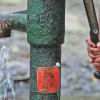What Nasa satellites say about Bangladesh’s climate

Nasa has declared 2023 as the year of open science. This leading space agency is making a long-term commitment to build an inclusive, open science community over the next decade. Open-source science is a commitment to the open-sharing of software, data, and knowledge (algorithms, papers, documents, ancillary information, etc) in a scientific process. The principles of open-source science are aimed at making publicly funded scientific research transparent, inclusive, accessible, and reproducible.
To this end, Nasa recently took an open-science initiative called the Earth Information System (EIS) Freshwater. This is a groundbreaking initiative by Nasa because of its accessibility, reproducibility of actionable Earth information backed by its best satellite information, models, and tools. The EIS Freshwater studies are focused on quantification and changes in water stored in rivers, lakes, reservoirs, and creeks and streams. Among various components of the EIS (such as wildfire hydrology, risk of flooding, water security, AI application), we started exploring the flooding impact of climate change and human activities in populous global deltas. The delta component is that we can quantify the relative changes in hydrology and freshwater availability due to climate change and human intervention using an integrated modelling framework. In the most recent phase of the EIS initiative, we started exploring the concept's applicability in the Bengal delta.
Climate is changing

Among the 48 deltas worldwide, the Bengal delta – of which Bangladesh is a part – is one of the most populous, where climate change and significant human activities have been taking place for the last few decades. From the sea-level rise projections, we found that the sea level has been rising in the Bay of Bengal 30 percent faster than the global trend. We also found that the amount of water stored in lakes, rivers, soil moisture and groundwater across Bangladesh (also known as terrestrial water storage) has been decreasing at an average rate of 12mm/year in recent times. We looked at the rainfall pattern and found a declining trend at a rate of 18mm/year over the last 20 years. Considering the overall precipitation decline over the Ganges-Brahmaputra Delta, we found that the dry season flow of all major rivers tended to a downward slope.
The combination of sea-level rise and decline of freshwater from upstream and precipitation is alarming, because we have been losing freshwater and saltwater has been pushing into the inland, and a big shift has already been happening in the southern part of Bangladesh from agriculture to aquaculture. Sea-level rise information was found using the sea level projections developed by Nasa's Goddard Space Flight Center, changes in terrestrial water storage was tracked using the Gravity Recovery and Climate Experiment (GRACE) satellite, and rainfall information was derived from the Nasa Global Precipitation Measurement Mission (GPM) precipitation product.
Human interferences are visible

After considering the climatic change-related information, additional satellite observations were also explored to understand the anthropogenic changes made due to human activities across the delta. The Moderate Resolution Imaging Spectroradiometer (MODIS) satellite provided Leaf Area Index (LAI) datasets, which was used as a proxy for vegetation coverage, and thus long-term trend was analysed to understand the change. From this dataset, we saw that in most parts of Bangladesh, vegetation coverage is increasing, except in Dhaka city and its surrounding areas. This is initially counterintuitive to the freshwater decline (there is no chance that water is getting lost across the country and vegetation is increasing). We also analysed the seasonal pattern of the vegetation cover change and found that the most significant increase in vegetation happened during the end of the dry season. We matched with the crop calendar and found that it was mostly happening due to Boro cropping. This trend indicates that the Boro cropping has increased significantly in recent times compared to other crops (such as Aus and Aman paddies).

We also analysed the same satellite-provided evapotranspiration or ET (evaporation from open water and transpiration from plants). The ET and vegetation trend was almost similar to each other, and thus, tell us that flooding irrigation practices during Boro season have increased significantly. Flooding irrigation is not only a waste of precious groundwater resources, but sometimes it also decreases crop productivity. Our findings were matched with more than 900 in-situ borehole information, and the findings are terrifying for the country. The groundwater trend is significantly negative across the country, indicating that it has been withdrawing water in an unplanned way to keep food production up to the mark. In some parts of the northwest region, we saw a declining trend of groundwater depth at around 0.9m/year.
Water security beside food security
The fact remains that we have 170 million people, and must maximise food production by following the government mandate: "food security is the first priority." Everything comes at a price; here, the price goes to the country's water security. With unplanned groundwater extraction, we are neither maintaining the safe yield limit of the groundwater aquifers, nor allowing groundwater replenishment. Through this practice, we have been at the depletion zone of a significant number of groundwater stations that cannot be reverted to their earlier state anymore. It has a huge unforeseen impact on the country's freshwater availability. Due to saltwater intrusion, access to safe drinking water in the southern part of the country is already at stake.
Our food production could have been maximised in different ways: 1) expanding croplands; 2) increasing cropping frequency; 3) exploring a less water-consuming variety of crops; and 4) employing smart irrigation practices using advanced, Internet of Things (IoT)-based irrigation technology. So far, options 1 and 2 have been prioritised to maximise food production in recent decades. To nullify further impact on groundwater resources, we must consider water security alongside food security. For the short term, we must explore other options to minimise further impact on available groundwater resources. In the long run, we can raise awareness among people to shift to a diet based on less water-consuming carbohydrates.
Dr Nishan Kumar Biswas is a Bangladeshi scientist working at Nasa's Goddard Space Flight Center in Greenbelt, Maryland, US.

 For all latest news, follow The Daily Star's Google News channel.
For all latest news, follow The Daily Star's Google News channel. 










Comments